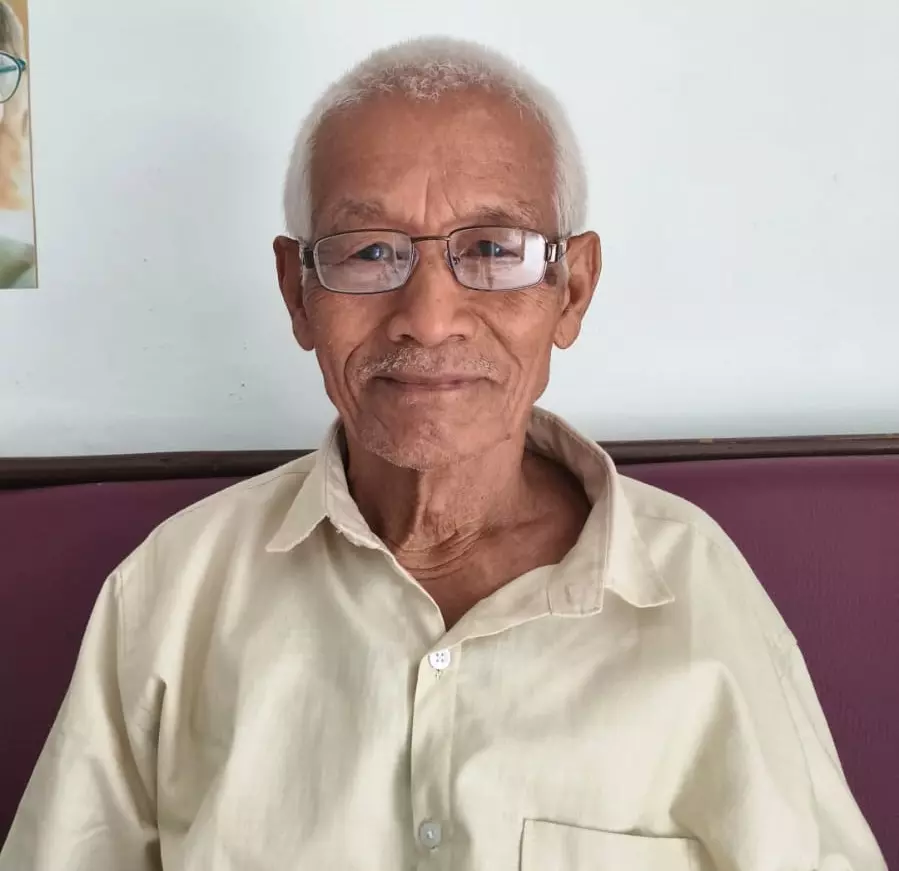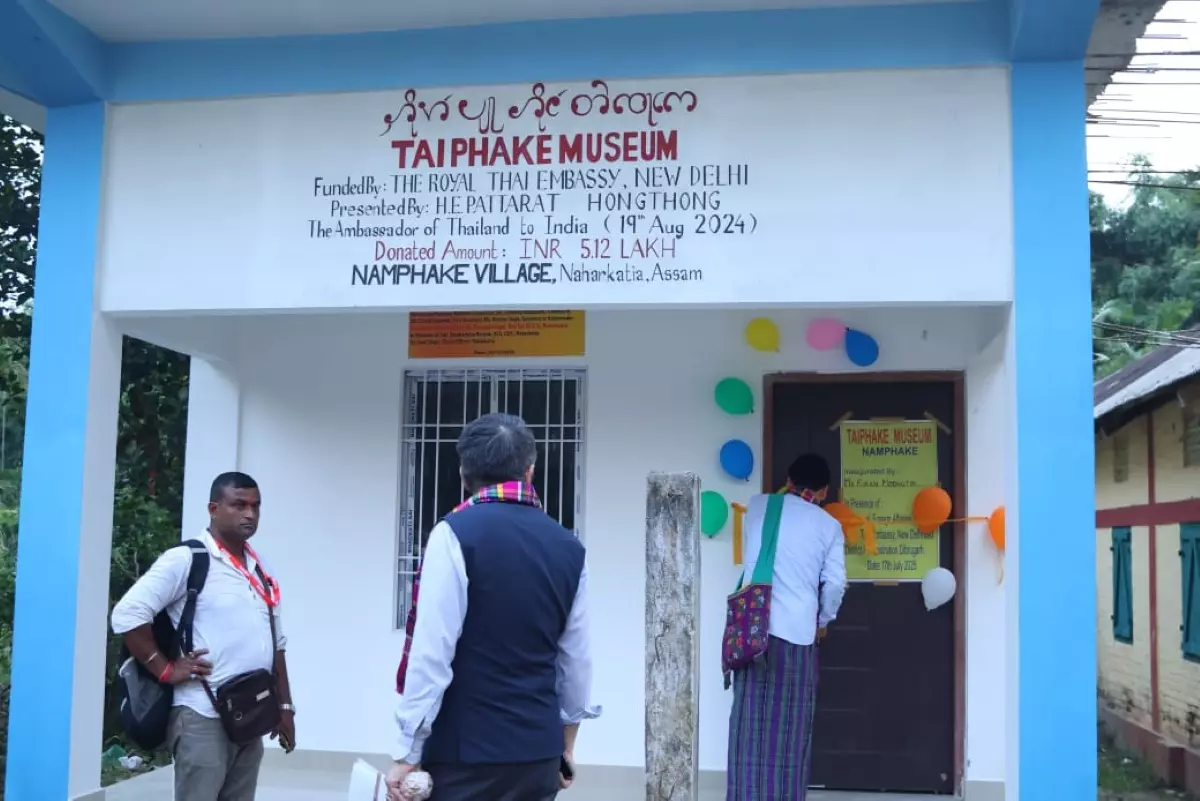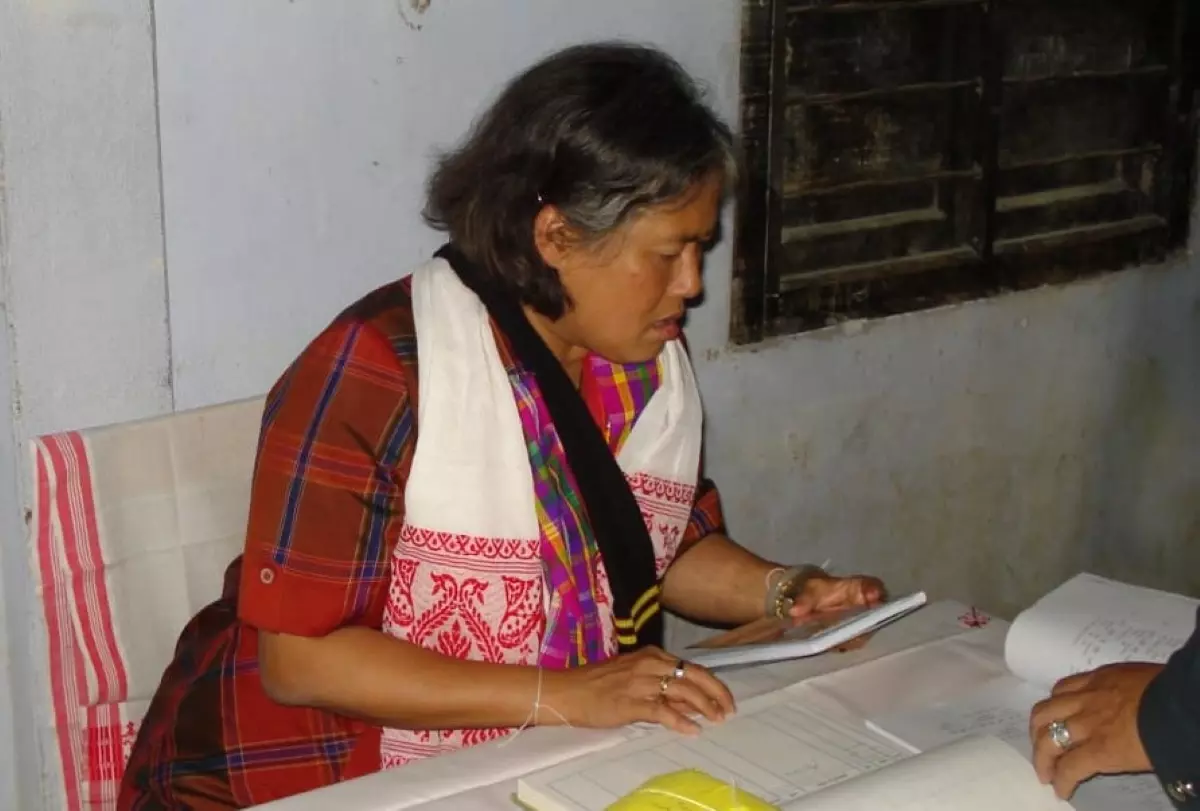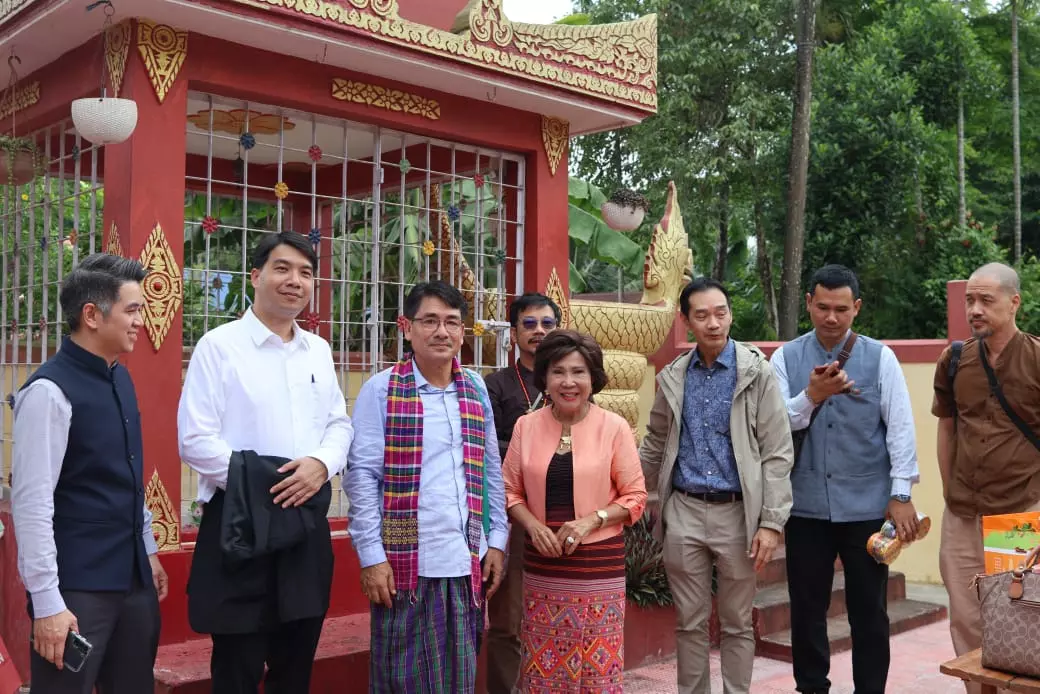
- Home
- India
- World
- Premium
- THE FEDERAL SPECIAL
- Analysis
- States
- Perspective
- Videos
- Sports
- Education
- Entertainment
- Elections
- Features
- Health
- Business
- Series
- In memoriam: Sheikh Mujibur Rahman
- Bishnoi's Men
- NEET TANGLE
- Economy Series
- Earth Day
- Kashmir’s Frozen Turbulence
- India@75
- The legend of Ramjanmabhoomi
- Liberalisation@30
- How to tame a dragon
- Celebrating biodiversity
- Farm Matters
- 50 days of solitude
- Bringing Migrants Home
- Budget 2020
- Jharkhand Votes
- The Federal Investigates
- The Federal Impact
- Vanishing Sand
- Gandhi @ 150
- Andhra Today
- Field report
- Operation Gulmarg
- Pandemic @1 Mn in India
- The Federal Year-End
- The Zero Year
- Science
- Brand studio
- Newsletter
- Elections 2024
- Events
How Assam’s indigenous communities are fighting to revive endangered Tai languages
From Tai Khamyang to Tai Phake, Tai languages in Assam are vanishing with their last speakers, leaving communities racing against time to revive languages that carry centuries of history but risk being lost forever

At 80 years of age, Chow Chikseng Thoumung, a resident of Assam, is fighting a crucial battle to save his mother tongue Tai Khamyang, a critically endangered language, from getting extinct. Thoumung, a resident of the quiet Powaimukh village in the Tinsukia district of Assam, close to the Assam-Arunachal Pradesh border, is among the last few remaining fluent speakers of the Tai...
At 80 years of age, Chow Chikseng Thoumung, a resident of Assam, is fighting a crucial battle to save his mother tongue Tai Khamyang, a critically endangered language, from getting extinct. Thoumung, a resident of the quiet Powaimukh village in the Tinsukia district of Assam, close to the Assam-Arunachal Pradesh border, is among the last few remaining fluent speakers of the Tai Khamyang language who is well-versed with the language’s script as well.
The Powaimukh village has close to a 1,000 members of the Tai Khamyang community, but only a fraction of the villagers are fluent in the language today. Thoumung is frequently visited by linguists and academicians who take keen interest in studying endangered languages, but in the past few years he has been frequented by young members of his own community, who are determined to revive the language and ensure it doesn’t go into extinction.
“I tell everyone who visits me, I have the treasure in the form of the Tai Khamyang language and whoever wants can take it from me,” Thoumung said.

Chow Chikseng Thoumung, 80, is among the last few remaining fluent speakers of the Tai Khamyang language.
Tai Khamyang is one of the five languages of the Tai Kadai group of languages, the others being Tai Phake, Tai Turung, Tai Ahom and Tai Khamti, and all these languages are similar, and barring Tai Ahom, all even have a similar script.
According to linguists, this group of languages falls under the South Western Tai language group. “These languages have a lot of similarities with other languages of the Tai group in South East Asian countries, like Thai spoken in Thailand, Tai Lao spoken in Laos, Tai Shan spoken in Myanmar, Tai Mao and Tai Lue spoken in the Yunnan province in China,” said Medini Mohan Gogoi, a language scholar of the Tai group of language associated with the Gauhati University.
Also read: Araku coffee: How Andhra Pradesh govt, tribal farmers are taking organic beans global
The Tai Ahom community members had migrated to the present-day Assam in the 13th century from the modern-day Yunnan province in China, and few centuries later the other Tai communities, Tai Khamyang, Tai Khamti, Tai Phake and Tai Turung, migrated from present day Myanmar and Thailand. Their languages were spoken for hundreds of years in Assam, but now these are critically endangered.
“Today all these languages are endangered and could go into extinction. There has been an awareness and attempt to revive these languages by the members of the community, but a lot needs to be done,” said Dr Arup Kumar Nath, Assistant Professor, Centre for Endangered Languages of the Tezpur University.

The Tai Phake museum was established on August 19, 2024, with funding from the Royal Thai Embassy, New Delhi.
Nath explained that these languages are not taught in schools and colleges, and people mostly took it as a burden to learn another language on their own using their own resources.
“Also one learns a language through discussion and talking to fellow speakers of the same language. In the case of these languages, there are already very few speakers. So once someone moves out from their house for studies or work, they mostly stop interacting in their mother tongue,” added Nath.
“Most of these community members have preserved their ancestral religious and cultural rituals, but couldn’t do the same for their language,” said Gogoi.
Pyoseng Choi Chowlu, a 44-year-old teacher belonging to the Tai Khamyang community, is among the ones leading the battle to revive the language. He had formed the organisation Phunglai Khanyang in 2010 with like- minded members of the community.
“There are about 10 villages in Assam which have some members of the Tai Khamyang community but Powaimukh has the highest numbers. In these villages we have observed, people who are aged about 60 years and above know the language fluently, most in the age group 40 to 60 years understands the language but doesn’t know how to speak the language,” said Chowlu.
In 2011-12 Chowlu brought innovation in the form of music and culture into his effort and it helped in his conservation efforts.
“I thought music and culture could be an important tool in our movement, and so we created songs and music in the Tai Khamyang language and used tunes of the language. It was a small experiment but it turned out to be a huge hit among the newer generation of the community,” said Chowlu.
“Since the past 12 years, a revival movement of the language has been seen, but it is a very difficult process to sustain these efforts as these are voluntary and self-funded,” said Chowlu.

Maha Chakri Sirindhorn, Royal Princess of the Thai Royal family, visited the Tai Phake High & M.P. School on February 2, 2009.
Nong Aiseng King, another member of Phunglai Khanyang, expressed regret that he had to learn his own mother tongue at such a later part of his life.
“I knew my mother tongue is Tai Khamyang, but rarely spoke the language and never knew the language beyond some words or sentences. I learnt my own mother tongue after my Master’s degree and now I am putting all my efforts in conserving the language,” he said.
King is presently working on three books in the Tai Khamyang language. One of the books is on folk tales of the Tai Khamyang community, and the other two books are on learning the Tai Khamyang language, and he is hopeful that these books could become reference books of the language in the future.
“These books are a collective effort by several individuals of the community and have been in the pipeline for a long time. Now it is finally getting shape and will be released within one year,” said King.
“People like Chow Chikseng Thoumung are a treasure trove of our language and I plan to compile more books with information from them. It will be a gradual and continuous process and with collective work we can ensure our language will not die,” added King.
Tai Phake, another language of the Tai group, is equally endangered and today has only about 2,000 speakers. Dr Ngi Yot Weingken, a scholar and speaker of the Tai Phake language, has been leading a movement to revive his mother tongue for the past few decades.
Weingken had established the Tai Phake High & M.P. School over 20 years back and is the headmaster of the school.
“We teach the Tai Phake language in the school as a subject. It’s a very small step by us but we are hopeful it will show a positive outcome in the long run,” said Weingken.
Also read: How climate change, tourism, and human greed push Uttarkashi towards disaster
Government delegations from Thailand and several South East Asian countries have visited the school over the years.
“Our language Tai Phake and the other languages of the Tai family has a lot of similarities with the Thai language and some languages of South East Asian countries, and this could play an important role in cultural exchanges, work opportunities, which could even play an important role in reviving our language,” said Weingken.
Maha Chakri Sirindhorn, Royal Princess of the Thai Royal family, visited the school on February 2, 2009, and since then Weingken’s efforts have regularly received support from the Government of Thailand.
Recently, on July 17 this year, Kiran Mongten, Minister of Foreign affairs of Thailand, paid a visit to the school, along with a team from the Thailand embassy in New Delhi.
“As part of our effort to revive the Tai Phake language, we had also set up a Tai Phake museum; it was established on August 19 last year with funding from the Royal Thai Embassy, New Delhi,” added Weingken.

On July 17 this year, Kiran Mongten, Minister of Foreign affairs of Thailand, visited the school along with a team from the Thailand embassy in New Delhi.
Linguists feel only public or individual efforts can’t help revive these critically endangered languages beyond a certain minimum level, and to actually be able to revive these languages, government intervention will be required.
“During my research work, when I had interacted with people from the Tai Khamti community, many simply said that they don’t see any benefits from the language. They said the Tai Khamti language doesn’t help in any way at a professional level,” said Dr Trisha Borgohain, assistant professor of the Assam Don Bosco University, who has done her PhD on “Grammar of Things and Situations” in Tai Khamti.
“There needs to be certain policy level decisions by the government and long-term planning,” said Gogoi.
Pointing to the Arunachal Pradesh government’s recent directive to include the Tai Khamti language in schools in the Namsai district, which has a sizable Tai Khamti population, Gogoi said that the Assam government should take a similar step.
Khammoun Phukan, who has done his PhD on “Ethnolinguistic Analysis of Kinship Terms in Tai Ahom Languages,” agreed on the observation by Gogoi and said that unless people see the benefits from learning an additional language, they are not likely to learn it.
“Learning one of the Tai languages in Assam is like learning or acquiring a new skill. Unless one actually benefits by acquiring this skill, he or she will not be interested to learn it,” said Phukan.
Citing an example, Gogoi said that there is immense tourism potential in the Tai culture, and the government could bring about a policy to recruit guides or translators but knowledge of Tai language must be one of the eligibility criteria. “One has to see an incentive to learn the language,” added Phukan.
